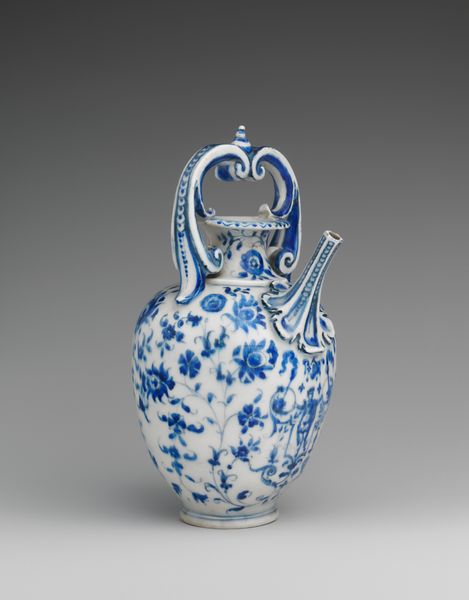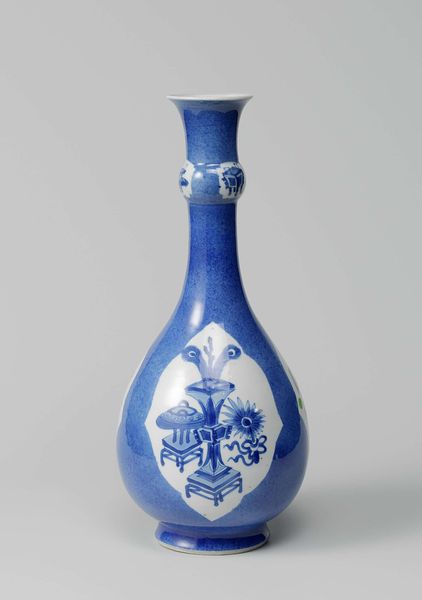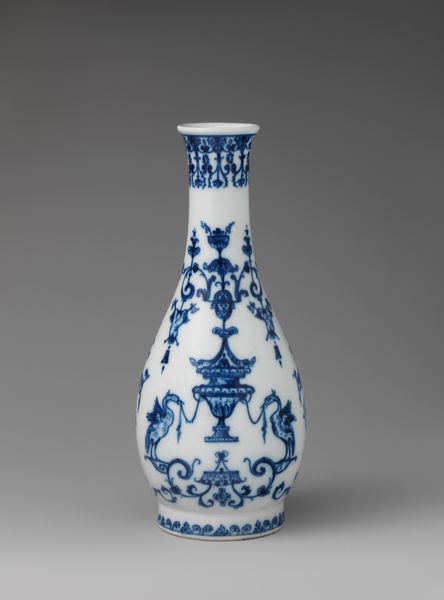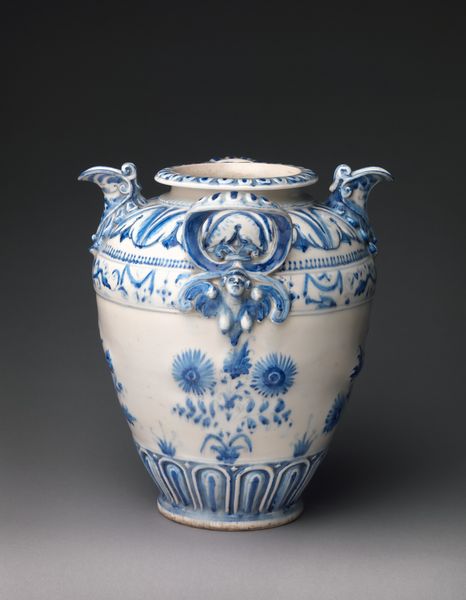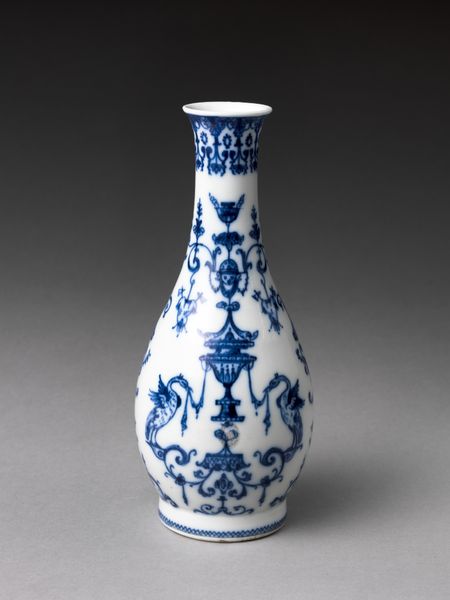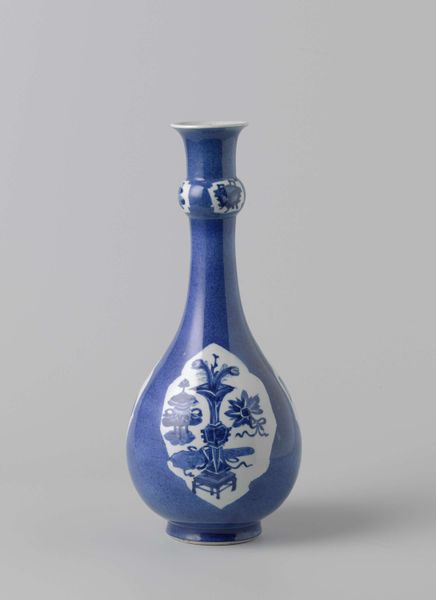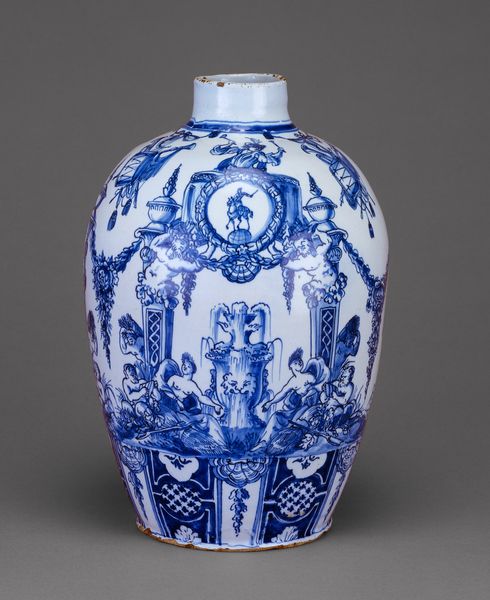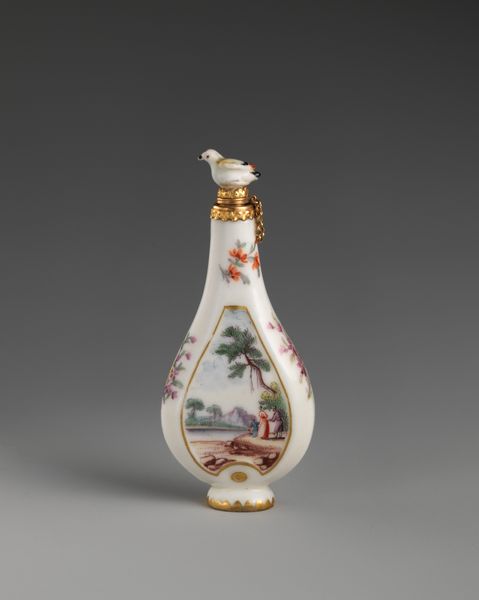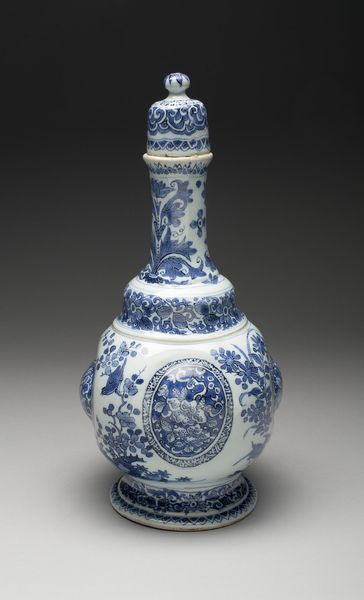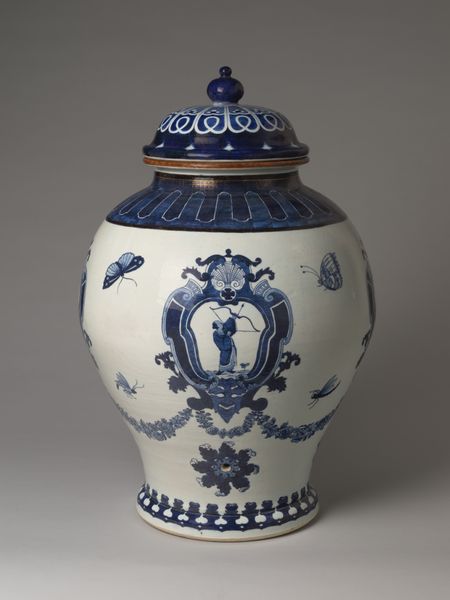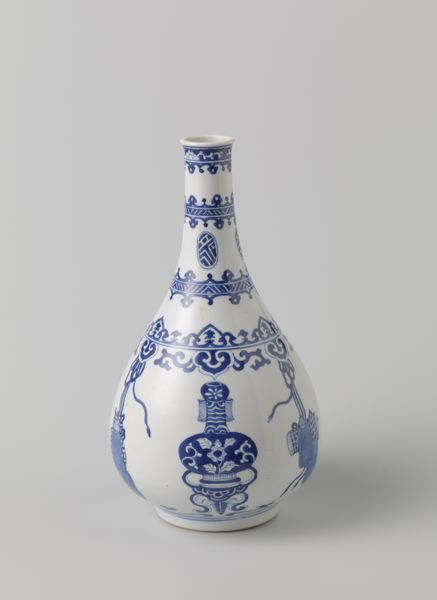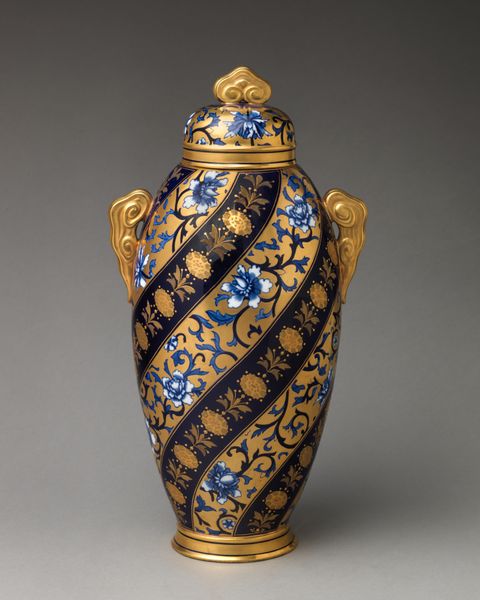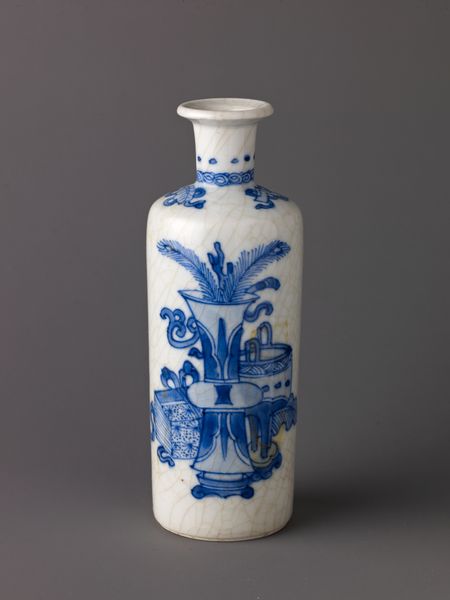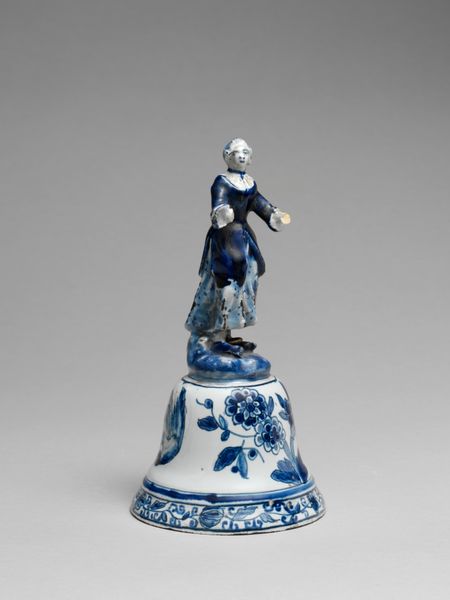
relief, ceramic, sculpture, terracotta
#
neoclacissism
#
relief
#
ceramic
#
jewelry design
#
sculpture
#
terracotta
#
decorative-art
Dimensions: Height: 2 1/2 in. (6.4 cm)
Copyright: Public Domain
Curator: Looking at this, I'm immediately struck by how delicate it seems. Almost jewel-like, despite its modest size. Editor: Indeed. What we have here is a Scent Bottle crafted between 1785 and 1799 by Josiah Wedgwood. Currently residing at the Metropolitan Museum of Art, it's a stunning example of neoclassical decorative art, predominantly made of ceramic, showcasing terracotta relief work. Curator: It’s quite a beautiful object. The cobalt blue provides a rich background for the white relief. One wonders about the production process, how the crispness of the design was achieved. How easily was terracotta accessible for creating luxury objects at this scale, and how does it reflect evolving consumer demands? Editor: Exactly. Wedgwood, a major figure in the Industrial Revolution, cleverly blurred lines between industry and art. This bottle reflects the influence of social and cultural factors. These weren't merely functional items but were carriers of symbolic meanings, objects of status in an era of rapidly changing societal structures. It's fascinating how these little items reveal broader consumer culture shifts in England and beyond during that period. Curator: You’re right. This wasn’t merely ornamentation; each precisely positioned flower and bow serves a distinct social function, contributing to a visual language that consumers were expected to decipher. Editor: Certainly. The prominent display of neoclassical motifs demonstrates how imagery was employed to communicate refined taste, shaping aspirations through everyday material life. Think about the messages it conveyed, about idealized beauty, or even power. Curator: A carefully conceived demonstration of how industry responded to a developing taste culture! Editor: Absolutely. Examining a piece like this Scent Bottle brings to the fore questions about craft versus industry, consumer culture's emergence, and art's relationship to power and desire, particularly in the 18th century. Curator: It makes you ponder the wider history of making practices. I can feel the labour and artistry contained within its diminutive form. Editor: I agree. Let us leave our listeners to consider how everyday objects might function as barometers of broader cultural currents.
Comments
No comments
Be the first to comment and join the conversation on the ultimate creative platform.
